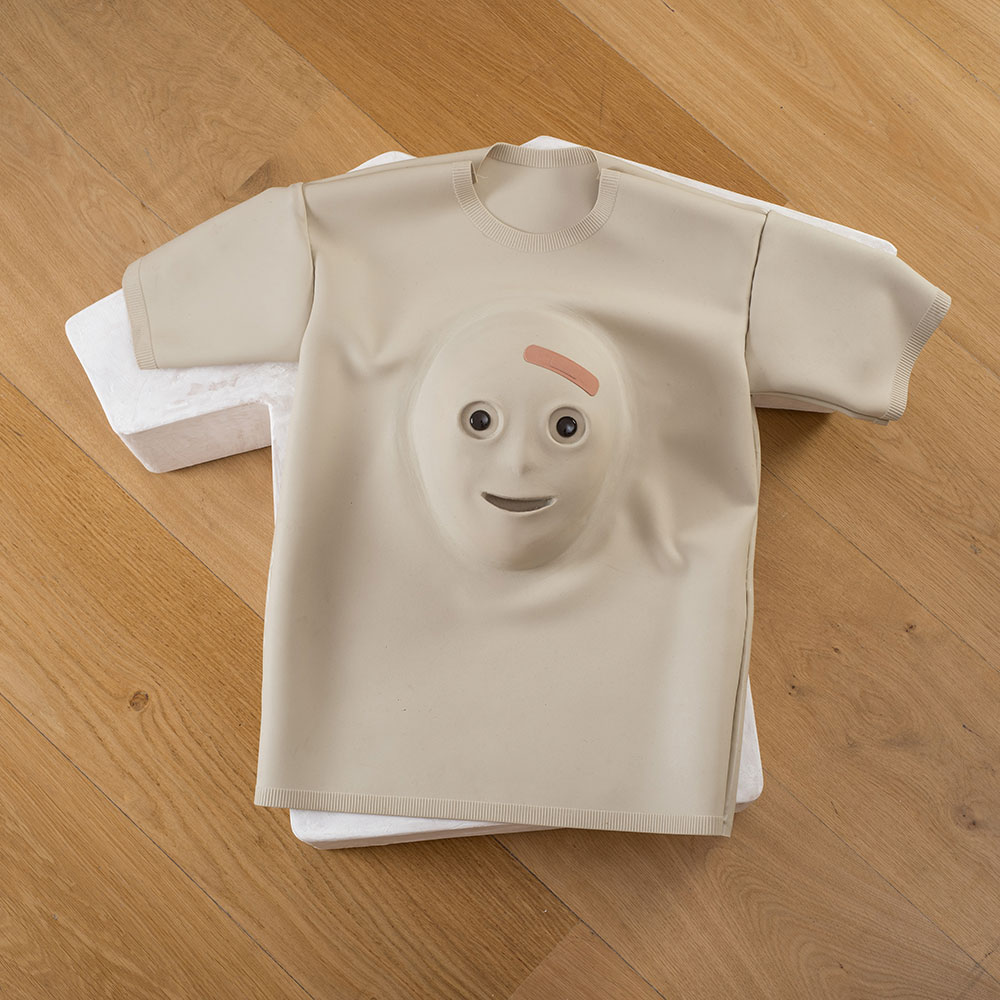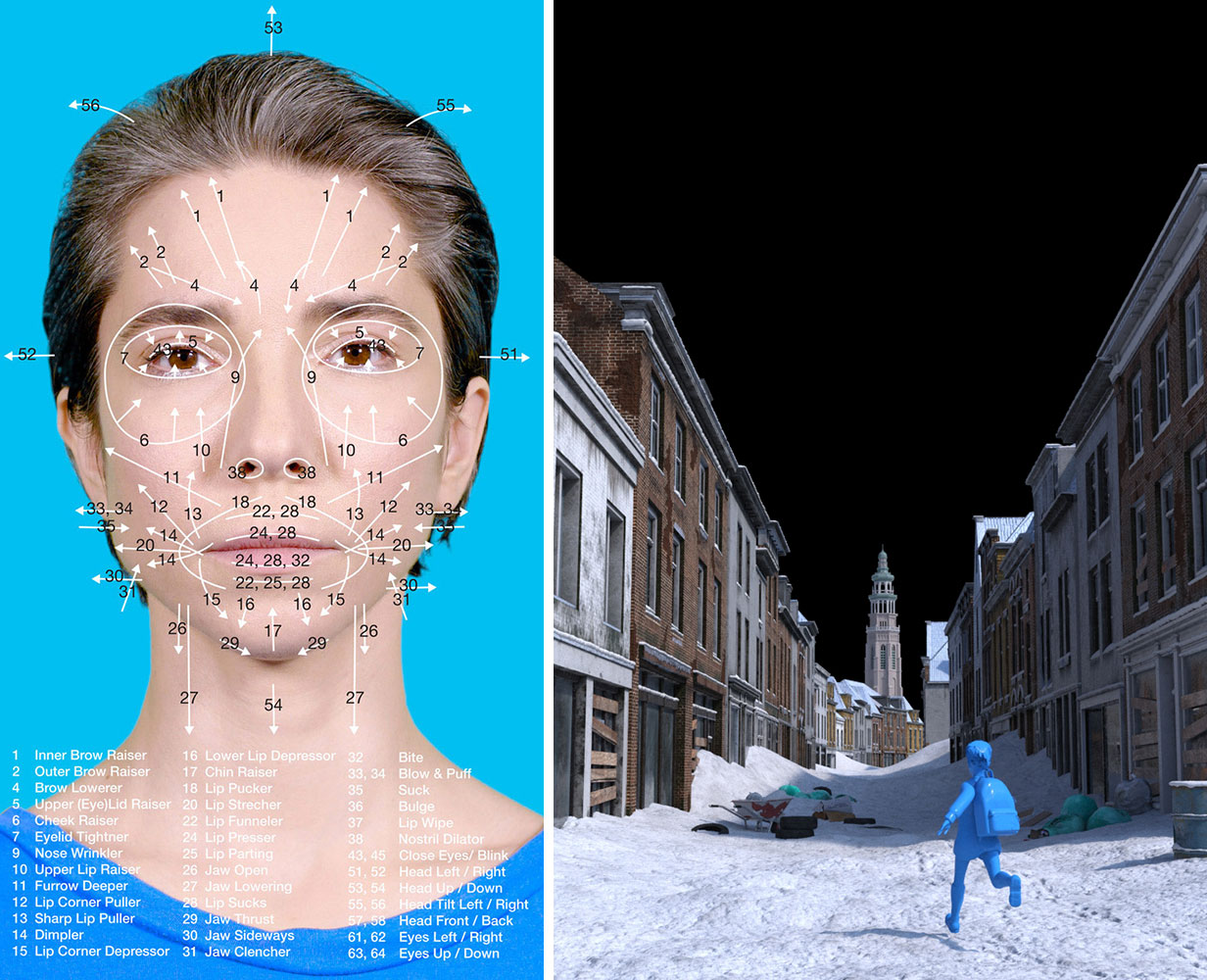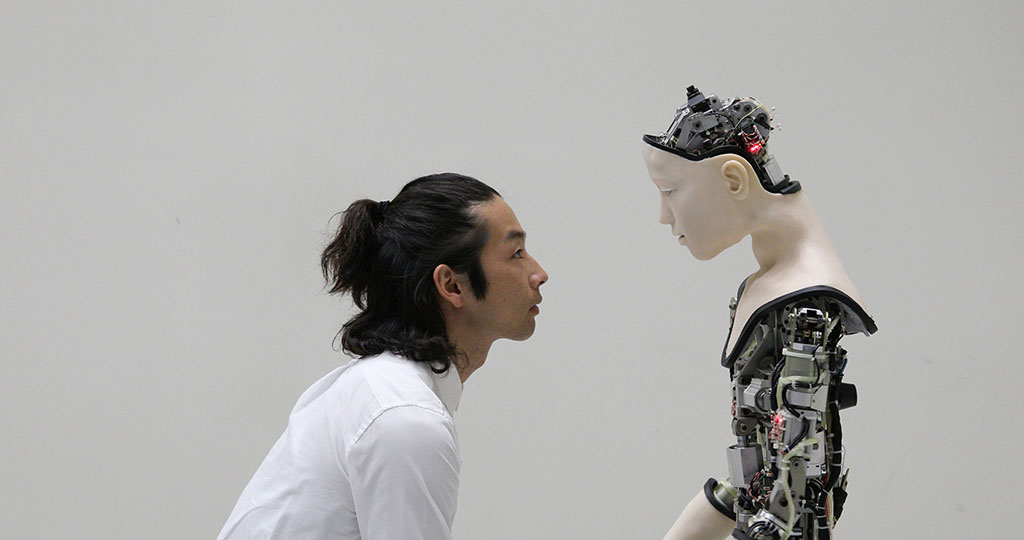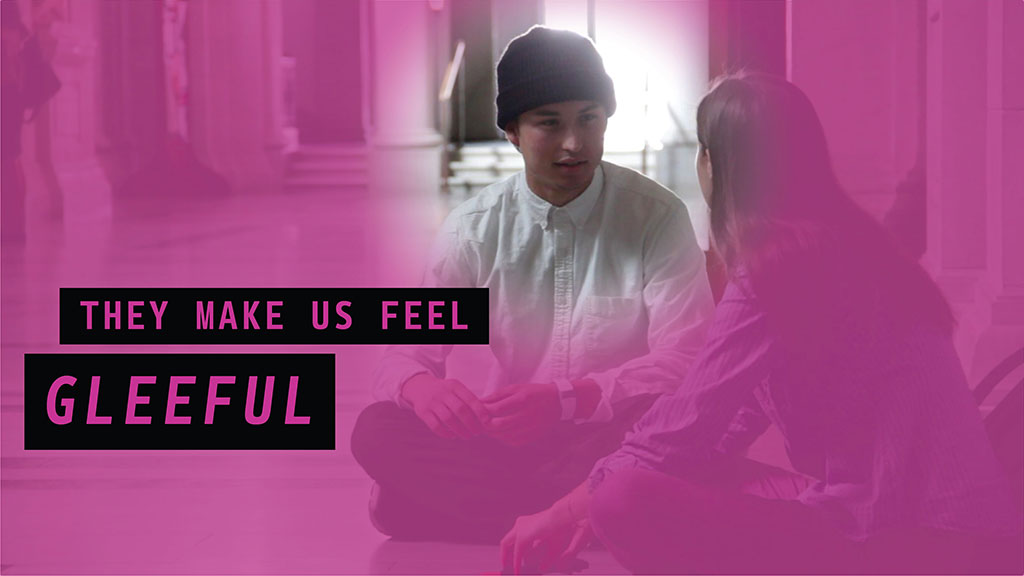ART-PRESENTATION: Real Feelings-Technology and Emotion
 Emotions are at the core of human experience. They influence every aspect of our lives and shape our social behaviour. In the 21st century, technology has begun engaging with emotions like it has never done before. In the international group exhibition, works by 20 artists are presented, ranging from artificial intelligence, interactive installations, robotics and biometrics to gaming, video installations, virtual reality and photography.
Emotions are at the core of human experience. They influence every aspect of our lives and shape our social behaviour. In the 21st century, technology has begun engaging with emotions like it has never done before. In the international group exhibition, works by 20 artists are presented, ranging from artificial intelligence, interactive installations, robotics and biometrics to gaming, video installations, virtual reality and photography.
By Dimitris Lempesis
Photo: HEK Archive
The exhibition “Real Feelings: Technology and Emotion”, explores how emotions influence every aspect of our lives and shape our social behaviour. In the 21st century, emotions have increasingly come into focus – how they can be manipulated and controlled by technology because they influence our society and our lives. In the latest years, we have witnessed how technologies like artificial intelligence, virtual reality or machine learning can manipulate our emotions. These technologies are even creating new feelings, some of which we haven’t yet found the words to describe them. Fake news and deepfake videos posted on social platforms like Facebook and Twitter have aroused feelings of insecurity and hatred in society. While major technology companies try to manipulate the way we behave by triggering our emotions every day through smartphones, laptops and personal devices.
Antoine Catala’s installation “Everything is Okay: Season 2” (2018) alludes to the increasing smartness of our homes. The installation consists of several kinetic objects: a plastic bag, a T-shirt and two socks. All of them have a smiley kind of face and they are breathing, some of them even singing. They all share the title “I am here for you” and there is a wall piece that assures us not to worry (“Don’t Worry”). The objects refer to the technological interaction we have with many smart objects today. Stine Deja & Marie Munk’s installation “Synthetic Seduction” (2018) contains what appears to be a newly born robot in an operating theatre. In the video “Foreigner” by Stine Deja we watch a robot that sings the song “I wanna know what love is” by the rock/pop band Foreigner. The video is shown in conjunction with the sculpture “Skin-to-Skin” by Marie Munk, that reflects our need for touch. An organ-shaped sculpture with a skin-coloured surface is soft and inviting to sit on. Justine Emard’s video installation “Co(AI)xistence” (2017) addresses questions of co-existence and co-habitation of humans and machines. In her poetic work, the robot Alter, developed by the Ishiguro Lab in Japan, reacts to the movements and verbal contact of a dancer. There is no common language yet, but tiny points of tactile encounters and forms of contact. It is through touch and encounter they appear to create an emotional bond.
The connection between emotion and things is the subject of “How happy a Thing can be” (2014) by Cécile B. Evans. The video piece concentrates on three humble everyday objects – a screwdriver, comb and a pair of scissors. The work explores the physical reality of their emotional lives in which they yearn for something more and push themselves to the limits and by inference relates to ourselves too. The destabilising effects of technology on human emotions are explored in Ed Fornieles’ video “Test Studies” (2017). The work has two split screens. One shows a player, who has been invited by Fornieles to participate in a role-play game simulating extreme scenarios, talking about these virtual experiences and the feelings they evoked, which to the players often felt more real than emotions they experienced in the real. The other screen shows Sims acting out the different trauma the actors are each talking about. Maria Guta’s video “Commercial Break” (2019) invites us to explore the happiness of changing personas. Her fictional work is set in a future where we can change identities like we pick destinations for quick weekend holidays. In her work, presented in the exhibition for the first time, she poses the question of whether these choices at our fingertips, will this make us happier? In the video “T3511” (2019) by Heather Dewey-Hagborg a bio-hacker becomes obsessed with finding the donor of the saliva she purchased online. Her hunt to track him down becomes like a (stalking) love story, and the piece whilst based on science fact is a design fiction in which the artist calls into question the rise of technologies which now commodify and sell human fluids, DNA, and other biological information.
In the video and sound piece “Streamers” (2018), Esther Hunziker borrows the ‘feelings’ expressed from the nonstop stream of filmed confessions online on global networks and gives the language new bodies. She calls her hybrid beings ‘specimens,’ so-called scientific paradigms, which she conserves and presents as ‘foreign’ objects, which look like stones or rocks on the screen. The limits of AI and emotional recognition software are indicated by Clément Lambelet’s photo series “Happiness is the only true emotion” (2019). Currently the only emotion which has the highest accuracy rate at being recognised using AI is happiness. AI may be heralded as magical and potentially being able to solve the world’s problems, but as these artists show it is still rudimentary and depends on what information is given to it. AI’s learning abilities are put to use in Lorem’s “Adversarial Feelings” (2019) in which he utilises AI, in particular the deep learning method known as generative adversarial networks (GANs) to generate faces which are filled with emotions which challenge definition. The results are again presented in a book, the content of which was also created and designed by an AI. “Vibe Check” (2020) by Lauren Lee McCarthy & Kyle McDonald, which has been commissioned for the exhibition, consists of a series of screens on which you see people portrayed in the exhibition to whom certain emotions are attributed. While walking into the exhibit visitors encounter cameras that film them as well as people around them. These cameras analyse the emotional responses of the bystanders and attribute these to the visitor in question, thus underlining how our emotional states are influenced by many aspects. At the end of the parcours the visitor’s end up at the same screens as they saw in the beginning, but now they experience their own image with the emotions they triggered in others while walking around the exhibition.
Also commissioned for the context of the exhibition is the work “Solitary Survival Raft” (2020) by Lucy McRae. She builds machines that gently squeeze the body and hold it tight. In the global pandemic brought about by Covid-19, the touch-deficit of our mediated society has changed into a fear of a future without human touch. Solitary Survival Raft addresses these issues by creating an inflatable, responsive, breathing sculpture which invites the viewer to crawl into it for safety and be embraced by its structure. A new commission by Simone C. Niquille, “Elephant Juice” (2020), explores how artificial emotional intelligence is used for hiring. Set in a bathroom, the work follows a character preparing for an upcoming automated job interview. The work reflects on these developments, but makes us aware of the limits of objectivity of these automated systems and their categorisation of deeply personal and delicate matters of emotions. Dani Ploeger’s installation “The Grass Smells So Sweet” (2018) concentrates on the relationship of the body to emotions. The work begins with a computer screen which shows extracts gathered from the web of people describing near death experiences. The second part of the installation is a VR experience. In “The Trace of Sorrow” (2018) Seokyung Kim trained an AI to write a book of poetry by enabling it to process 800 works of romantic literature. In her interactive installation Encyclopedia of Emotion she invites the audience to write emotional texts. These texts are then used by a computer to ‘speak’ with humans, by creating it’s own ‘poetry’ with it.
The interactive installation “Mind” (2019) by the duo Shinseungback Kimyonghun comprises of drums filled with tiny metal balls, which change and create ocean sounds based on the appearance of the audience. A camera in the centre of the room is tracking the faces of visitors and a facial recognition software is interpreting the emotion, which are then translated as movements of the metal balls and the sounds they create. The artists created a new version of their installation for the exhibition. Looking towards the scientific achievements of robotics is Maija Tammi with “One of Them Is a Human” (2017). Four photos show humanoid robots developed by Hiroshi Ishiguro, one of them Erica, the Japanese android who was declared the most realistic female human robot of 2016. In her work Tammi addresses the eroding boundaries between humans and machines that will force us to reconsider what it is to be human. In the video “Terminal Beach” (2020) by artistic trio Troika, that has its world premiere at the exhibition, an industrial Kuka robot covered in fur, chops down the last tree in a desolate landscape with an axe. The fur accentuates its movements and makes the violent action of the robot seem comical and alluring. It is uncanny – a liminal piece which is discomforting yet compelling at the same time.
In her work “Facial Action Coding System” (2018) Coralie Vogelaar is showing the Action Units, the temporal segments our facial expressions are divided into by emotion recognition software to deducting them into certain percentages of six basic emotions: happy, sad, angry, surprised, scared and disgusted. The print shows the face of an actress that trained to control her 44 facial muscles to display a diversity of emotions. In her newly produced piece “Infinite Posture Dataset” (2020) she focuses on the detection and interpretation of emotionally loaded body language. In “Renderlands” (2017) Liam Young takes us into the world of render farms: companies that produce computer-generated images. Most of these are based in India, and this digital film creates an entirely new world as it drifts between real footage and the animated, rendered landscapes based on reality. We follow one of the workers of the render farm who falls in love with the virtual model that he builds and who prefers to spend his free time in the perfect virtual world rather than in the grim reality he finds himself in.
Participating Artists: Antoine Catala, Stine Deja & Marie Munk, Heather Dewey-Hagborg, Justine Emard, Cécile B. Evans, Ed Fornieles, Maria Guta & Adrian Ganea, Esther Hunziker, Seokyung Kim, Clément Lambelet, Lorem, Lauren Lee McCarthy & Kyle McDonald, Simone C. Niquille, Dani Ploeger, Lucy McRae, Shinseungback Kimyonghun, Maija Tammi, Troika, Coralie Vogelaar, Liam Young
Info: Curators: Sabine Himmelsbach, Ariane Koek and Angelique Spaninks, HeK (House of Electronic Arts Basel), Freilager-Platz 9, Basel, Duration: 27/8-15/11/20, Days & Hours: Wed-Sun 12:00-18:00, www.hek.ch



Right: Ed Fornieles, Test Studies, 2017, video still, Courtesy: the artist


